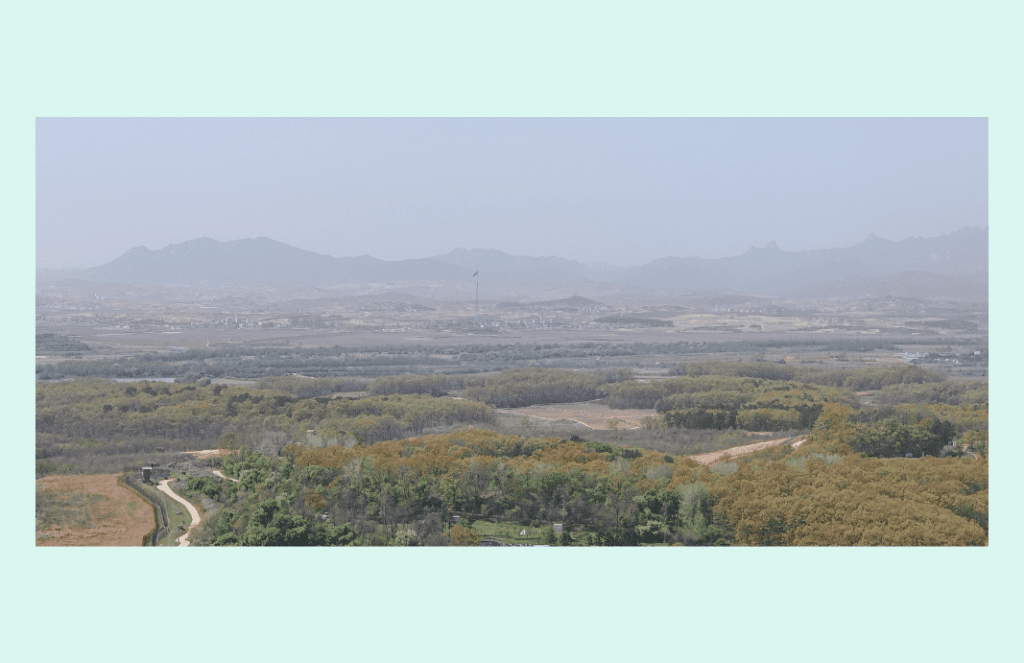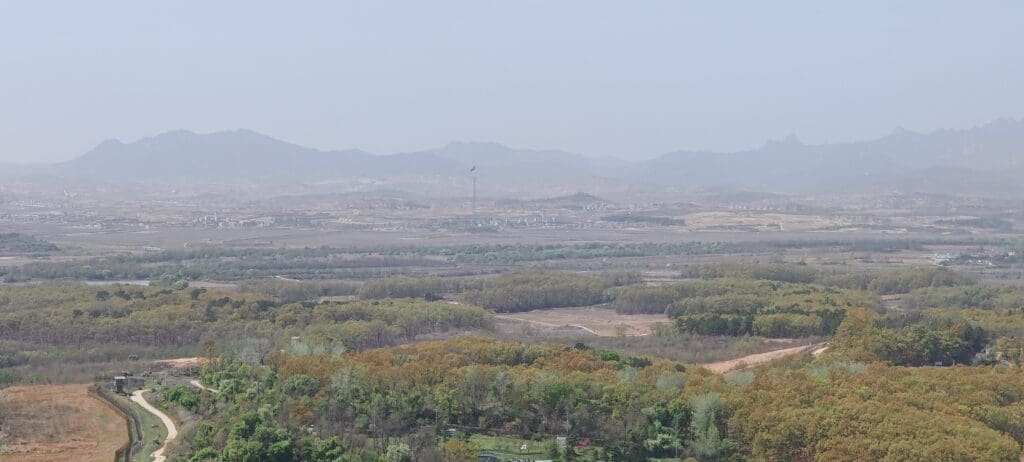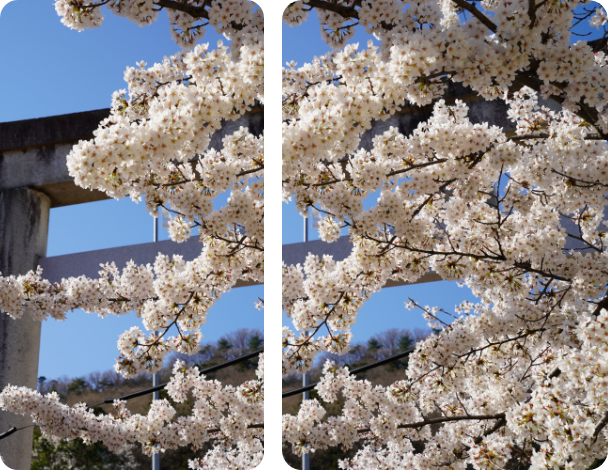World peace, climate change, and why they go hand in hand...
I think we all have conversations in our lives that we wish we could go back to. In some instances, we wish that we had expressed ourselves differently. On other occasions, we regret not having the courage to say something that we now wish we had said. In some cases, we forcefully argued for a particular point of view, only to realise years later that we were totally wrong.
This is the story of one such conversation, which I desperately wish I could return to. A time when I got something very important, entirely wrong.

Years ago I was speaking to the person sitting next to me on a flight. She was kind and softly spoken, perhaps in her late 50s. She was on her way to a conference to launch a new organisation. I don’t recall its name, but I do remember that the purpose of the organisation was to support projects that made a positive impact on world peace and climate change.
After describing the idea to me in some detail, she asked what I thought. And I told her, being a naive young man, that I thought the organisation’s aims were too broad. I remember explaining that whilst both world peace and climate change were positive and important causes, they were different causes. I argued that they had nothing to do with each other. That they were too big as individual issues to put together under a single umbrella. That people would be confused about the work that the organisation was trying to achieve.
My suggestion, therefore, was to pick one of those issues, and focus on that. It was cleaner. Easier to understand. More likely, I said, to achieve its aim. She listened quietly, very politely disagreed, and then we went back to our in-flight movies and meals.
…
In April 2023 my wife and I had the opportunity to visit South Korea. It is a fabulous country. We began our visit by spending nine nights in Seoul, which is easily one of the best cities in the world. I remember walking through a huge, 600-year-old palace built in a wonderful traditional style, only to step out the front gate to gawk at the shiny new Microsoft offices towering above us on the other side of the street. Seoul is a fantastic blend of the old and the new, the modern and the classic, and it buzzes with a wonderful youthful energy that is hard to describe.
It is a one-hour drive from Seoul to the border with North Korea. The history of the Korean peninsula is beyond the scope of this article, but readers will be aware of the divide between Communist controlled North Korea, which was largely a result of Russian and Chinese influence, and Democratic South Korea, which was largely a result of American and other Western influence.
In 1953 at the end of the Korean War, an area known as the De-Militarized Zone (DMZ) was formed between the two countries. It is four kilometres wide and stretches from one side of the peninsula to the other, some 250 kilometres, bisecting the 38th parallel, which used to be the line between the two countries.
Other than via a small set of meeting rooms and other facilities in the middle of the DMZ known as the Joint Security Area, the DMZ is impassable. To make sure that it served its purpose as a dividing line which no military could cross, North and South Korea surrounded the DMZ with layers of barbed wire fence, and then dropped some two million land mines across the length of the DMZ.

A section of the original barbed wire fence from the DMZ. I keep it on display in my home as a reminder of the lessons that my visit to this unhappy place taught me.
Two million isn’t a number that many of us can truly appreciate, so let me express that figure slightly differently. In every square meter of the DMZ, there are, on average, two land mines. No human could ever make it across on foot.
Whilst we were in Seoul, we took an organised trip to visit the DMZ. We learned about the Korean War and the history of the peninsula. We walked along a tunnel several hundred meters underground, taking us underneath the DMZ and within about 70 meters of the North Korean border. We went to the top of a building from which you can look out across the no-man’s land that is the DMZ and into North Korea.

The view into North Korea from the DMZ visitors’ centre. In the middle is the tallest flagpole in the world (160 meters), erected by North Korea.
It is a strange thing to be looking through a high-powered telescope, across four kilometres of impassable land, only to see a landscape that looks very similar to that which is behind you. To drive just one hour from the cultural and material wealth and freedoms of Seoul, to look upon the reality of one of the most oppressed peoples on earth, living under an extraordinary and brutal regime of oppression and poverty, in a way that I could never hope to understand. The DMZ is – to say the least – a tense place to visit.
Amidst the depressing horror of that reality, there was one display in the small museum at the DMZ visitors centre that caught my eye. Something which truly gave me hope.
In the DMZ, the most heavily land-mined piece of earth in the world, nature thrives.
The DMZ is an extraordinary hot spot for biodiversity. It is a paradise for animals rarely found in other parts of the Korean peninsula, including rare species of bears, cranes, deer and otters.
Wildlife surveys by scientists researching the ecology of the DMZ (who are amongst the few people allowed to enter very limited parts of the area) have found 6,168 species within eight areas of the DMZ. Of the 267 endangered species on the Korean peninsula, 102 have been recorded in the DMZ.
The DMZ is a haven for birds, rare plants and other wildlife, which grow and flourish in a place where no human could survive. There is a strange irony to this reality, and it was this which stuck with me most from my brief visit to this strange and unhappy place.
Where there is peace – however that is achieved – nature thrives.
…
I was born in 1990. And sometimes it feels like I cannot remember a time when the world was in a ‘good’ place. The appalling attack on the Twin Towers happened when I was just 11. The Iraq war began when I was 13. I was 18 when Lehman Brothers went bust, kicking off the global financial crisis from which I am still not sure we have ever recovered.
Since then we have had the horrible fallout from Brexit and the nightmare that was covid. The Taliban re-took Afghanistan and systemically began dismantling civil rights in that country, and horrific civil wars have decimated Syria and numerous other African countries. Women have bravely protested for their freedoms on the streets of Iran only to be brutally crushed by that authoritarian regime, and Putin started his disgraceful war against Ukraine.
I have watched China agitate over Taiwan, read powerlessly about the fate of Uyghurs and other Muslim minority groups in the region, and watched with horror as the most recent events have unfolded in Israel and Gaza, directly impacting many of my own family and friends.
And at some point along the way, I started to learn about a different issue.
Climate change. A problem so hopelessly complicated and terrifying in its implications that just knowing where to start is a nightmare which frequently leaves me, and millions of young people around the world just like me lying awake in bed at night, with no idea what our collective future might look like.
Sometimes I just want to give up. The mess that is humans on planet Earth is just too complicated. Politicians have been trying – and failing – to do anything about it for years. The planet seems more at war, divided and polarised than ever, and it is well arguable that the COP process is yet to achieve anything that looks realistic or has any teeth as regards climate change. The idea that, as a species, we might be able to come together and rise to the many challenges of these times feels further away today, in many respects, than it ever has in my 34 short years on this earth.
…
In my darkest and most nervous moments, I think back to that lady on the plane. And I think about the DMZ. Teeming with life, amongst the threat of so much death. And I realise how right that lady was.
I realise that we will never be able to solve climate change without first achieving world peace. Because a world at peace is a world where nature can thrive. But beyond that, I realise that these two issues, which I so easily dismissed as different things, can and must go hand in hand. I realise that, just maybe, rising to the challenge of climate change could be the issue which brings us together.
…
One of the few things that I like about climate change is that it doesn’t discriminate. It is everyone’s problem. Climate change doesn’t care if you are black or white, male or female, straight or gay, Jewish or Muslim, or whether you live in the Global North or the Global South. It doesn’t care about your job or your company or your shares or your pension fund. It doesn’t care if you are in the richest 0.1%, or the poorest 0.1% – it is coming for all of us; even if some of the richest seem to think that they can use their wealth to buy their way out of its clutches, at least for a while.
If you want to bring people together, you have to give them a common cause. It isn’t enough to just resolve differences between people and then leave them be; those differences will always find a way to rear their ugly heads again, days or years further down the line.
Bringing people together by giving them a common cause, something bigger than just themselves – something existential to them both – gives people a space in which to collaborate. They need not necessarily resolve their differences, at least straight away. But by working together on a common challenge, we create something special.
We create the opportunity for friendship.
We create the opportunity to stop seeing those on the other side of whatever cause we align with as just the opposition. We start to understand them as people. We learn about their lives and their families. Their hopes and their aspirations. Their hobbies and their passions. Their doubts and their fears.
And when our differences rear their ugly heads from time to time as they surely will until they are properly and genuinely resolved; when history or politics or tribal affiliations or religious divides or ignorance and intolerance cause us to turn against each other, we might just find it harder to pick up our rifles and point them at each other, if to do so is to aim a weapon at our friends. Friends we made, working together, overcoming our common challenges.
In the space of friendships created whilst working on a common problem, I wonder if we might just find the opportunity to genuinely resolve our differences. An opportunity to find peace with each other, and ourselves.
…
I named the law firm that I am working to build after an idea. That the generation of children born in the year 2100 will be defined by the need to Repair, Rewild and Renew our planet and its natural environment, unless we can collectively do something to change that fate. Generation-R, as I like to call them.
If (and hopefully when) Generation-R is writing about those of us who lived through these unfortunate times, I hope that they might tell the history of a divided planet, which came together to work on a common problem.
I hope, when historians tell our story a century from now and the first of Generation-R is turning twenty years old, they will describe how climate change – the greatest challenge that the world had ever faced to that point – actually brought humans together. How it created friendship and understanding as we worked on a common problem, and in the process catalysed peace to the benefit of us all.
I would argue that this is already happening in many climate change related forums, and the final few hours of the formal proceedings at COP28 in Dubai showcased the power of international collaboration to progress common issues. I could not help but smile at my television as I watched some small glimpse of what a planet at peace might look like, as countries took turns to express their views, and even intense frustrations, with dignity and civility in an atmosphere of shared purpose and mutual respect.
I hope that Gen-R Law can one day exemplify what that vision looks like. I hope we can have offices around the world, where people from every walk of life, faith and background come together as friends and colleagues, working on a challenge that is so much bigger than our differences. I hope that those friendships can help to create a space in which the problems that generations before us have failed to resolve, can finally be addressed.
A world at peace is a world in which climate change can be addressed and nature can be given the space to thrive. And we cannot achieve one, without achieving the other.
To the lady who I sat next to on that plane years ago. If you happen to remember our conversation and stumble across this article. Please forgive me. I was wrong. But I understand now, and I am joining the team.
Sorry I’m late. And I hope your organisation is thriving.
Get in touch
We opened our doors on 4 March 2024. As a relatively new firm, we are not yet in a position to offer all of the services described on this website. We have done our best to make clear what we can do now, and what forms part of our exciting plans for the years ahead. We are working hard to make our ambitious vision into a reality.
In the meantime, please do subscribe to receive our regular thought leadership and feel free to follow our journey and progress on LinkedIn.
